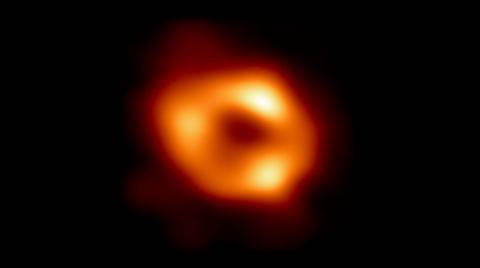Reactions to the simulation of a holographic wormhole on a quantum computer
The journal Nature publishes a quantum simulation of a holographic wormhole on a quantum processor. The demonstration, carried out with the Google Sycamore processor, represents a further step towards the possibility of studying quantum gravity in the laboratory.
Credit: inqnet/A. Mueller (Caltech).
Ignacio Cirac- agujero gusano cuántico EN
Ignacio Cirac
Director of the Theory Division of the Max-Planck-Institute for Quantum Optics in Garching (Germany)
It is a very interesting article that shows how prototype quantum computers that already exist or will be built in the near future can become a key tool to address fundamental questions. The experiment presented in the article is still too basic to be able to answer these questions. For example, the prototype it uses is no more powerful than the supercomputers we have at our disposal. Still, it is an important step in that direction.
Another relevant issue that is important to note is that the experiment does not create a gravitational wormhole, but it does a simulation. On the other hand, there is a huge interest in the scientific community in this kind of simulations because they can shed light on how black holes behave, especially when we study them from the perspective of quantum physics.
Carlos Sabín - agujero cuántico EN
Carlos Sabín
Ramón y Cajal Researcher Department of Theoretical Physics UAM Madrid
We do not have a quantum theory of gravity, and doing experiments to test the various alternatives (such as string theory) is very difficult, if not impossible. Hence, in recent years there has been interest in certain theoretical relations called dualities, in which an equivalence relation is established between quantum theories of gravity in certain model universes, on the one hand, and quantum models without gravity, which are well known and can be studied in the laboratory, on the other. In this Nature article, the authors use one such relationship between a traversable wormhole in a certain type of universe (on the one hand) and a network of quantum bits (cubits) on the other.
Wormholes are much loved in science fiction, because they are something like shortcuts in space-time that connect two points that would otherwise be far apart. We haven't seen any in our universe, but in principle, general relativity allows for their existence. There are good reasons to believe that a quantum theory of gravity should rule out their existence in our universe, but, as we said, we do not have such a theory.
It is important to understand that no wormhole has been created in this experiment. We are talking about an analogy. According to the theoretical model used by the authors, the quantum teleportation of a cubit in the laboratory's network of cubits is equivalent to a cubit going through a wormhole in a certain model universe with gravity, in the sense that some properties of the cubit in the laboratory can be related to those of the cubit in the model being simulated. In other words, it is as if there is a dictionary that translates for me what happens to the real cubit into the language of what would happen to the simulated or virtual cubit.
The experiment has been linked to Google's quantum computer, Sycamore, which a few years ago claimed to have achieved so-called quantum supremacy, i.e. calculations impossible for a classical computer to perform. In this case, not all the possibilities of the computer are used, as only nine cubits are used. The details of the wormhole analogy mean that a large number of operations have to be performed with the cubits. In particular, with nine cubits, the authors have performed 164 quantum gates between pairs of cubits. Increasing the number of cubits would increase the number of quantum gates and, as today's quantum computers still have a relatively high error probability, we would reach a number of gates that would make the results unreliable.
As the number of cubits is always so low, the experiment could also have been simulated on a conventional computer. However, the authors introduce techniques that show how the experiment could be efficiently extended to a higher number of cubits, so that an experiment beyond the capabilities of a conventional computer could be performed once we have quantum computers with lower error probabilities, which is expected in the next few years. In any case, this experiment shows that, even with a few cubits and the current error probabilities, quantum computers can already do interesting things.
Daniel Jafferis et al.
- Research article
- Peer reviewed


